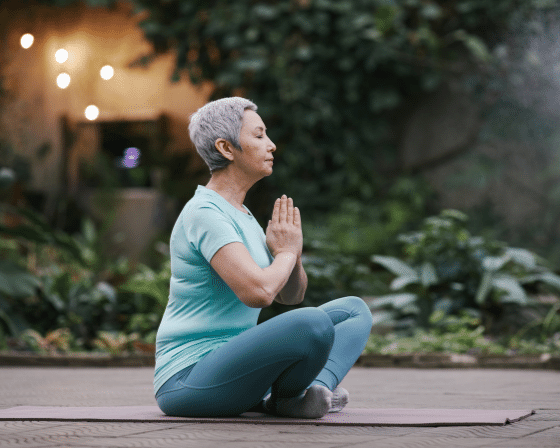Introduction
Bipolar disorder is a mental health condition that affects mood, energy, and daily life. It involves cycles of highs (mania or hypomania) and lows (depression), which can make everyday tasks feel unpredictable. While medical treatment and therapy are the foundation of bipolar disorder management, lifestyle habits play an important role in maintaining balance.
One of the most powerful lifestyle tools is exercise. Moving your body doesn’t just improve physical health—it also has a direct impact on mental health. Exercise can help reduce stress, improve mood, and provide structure, all of which are especially valuable for people living with bipolar disorder.

This article explores how exercise fits into bipolar disorder management, what types of activity are most effective, and how to safely create a routine that supports long-term wellness.
What Exercise Is Best for Bipolar?
Not all exercise works the same way, especially for someone managing bipolar disorder. The goal isn’t to push your body to extremes but to find movement that feels balanced, enjoyable, and sustainable.
1. Aerobic Exercise
Activities like walking, jogging, cycling, or swimming increase heart rate and circulation. They are excellent for releasing endorphins—the brain’s natural “feel-good” chemicals. Aerobic exercise can reduce depressive symptoms, boost mood, and improve overall energy.
2. Strength Training
Weightlifting or bodyweight exercises build confidence and resilience. Strength training also improves sleep, which is crucial for people with bipolar disorder, since sleep disturbances often trigger mood shifts.
3. Mind-Body Practices
Yoga, tai chi, and pilates help calm the nervous system. These practices encourage mindfulness, deep breathing, and body awareness, which can be grounding during manic or anxious states. They also reduce stress hormones and promote relaxation.
4. Low-Impact Activities
Gentle exercises like stretching, walking in nature, or light dancing can be particularly helpful during depressive episodes when motivation is low. Small, manageable activities are better than pushing too hard.
The takeaway: The best exercise for bipolar disorder is one that balances the body and mind. Variety works well—mixing aerobic, strength, and calming activities ensures benefits across mood states.
How Do You Manage Bipolar Disorder?
Managing bipolar disorder requires a holistic approach. Exercise plays a role, but it works best when combined with other strategies.
Core Elements of Management
- Medication – Prescribed by a healthcare professional, medications help stabilize mood and reduce extreme highs or lows.
- Therapy – Cognitive-behavioral therapy (CBT), psychoeducation, and support groups teach coping strategies.
- Routine – Consistent daily schedules for sleep, meals, and activities reduce mood instability.
- Healthy Diet – Balanced nutrition supports both physical and mental health.
- Sleep Hygiene – Protecting sleep is essential, as sleep disruptions can trigger mood episodes.
Where Exercise Fits In
Exercise supports all of the above. It promotes better sleep, reduces stress, and provides structure. For many people, it also serves as a natural outlet for managing energy fluctuations.
During a depressive phase, exercise can provide a gentle boost in energy and mood. During manic or hypomanic phases, it can help release excess energy in a safe way.
Key idea: Exercise doesn’t replace medical treatment, but it strengthens every other part of bipolar disorder management.
What Are the Exercise Guidelines for Bipolar People?
Just as medication has recommended doses, exercise works best when done with balance and consistency. Here are some guidelines tailored for people with bipolar disorder:
Frequency
- Aim for 3–5 days per week of moderate activity.
- Daily light movement (like walking or stretching) is also beneficial.
Intensity
- Avoid extreme or competitive exercise that may fuel manic energy.
- Moderate intensity—where you can still hold a conversation while moving—is ideal.
Duration
- Start with 20–30 minutes per session.
- Gradually build to 45–60 minutes if it feels sustainable.
Consistency
- Routine matters more than intensity.
- Even short walks can be valuable if done regularly.
Safety Tips
- Track your mood alongside your exercise routine.
- Exercise with a friend or in a supportive group to stay motivated.
- Avoid exercising late at night, as it may interfere with sleep.
- Consult with a doctor before starting intense new routines.
Guideline summary: Exercise should be consistent, moderate, and adapted to your current mood state.
What Is the Most Successful Treatment for Bipolar?
The most successful treatment for bipolar disorder is a combination of medication, therapy, and healthy lifestyle habits.

- Medication is the foundation for stabilizing mood swings. Common treatments include mood stabilizers, antipsychotics, and antidepressants when appropriate.
- Therapy helps individuals understand their patterns, manage stress, and build coping skills.
- Lifestyle factors, like exercise, nutrition, and good sleep, strengthen the effects of medical treatment.
Exercise alone is not a cure, but it can reduce the intensity of mood swings, improve quality of life, and provide a sense of empowerment.
The Benefits of Exercise for Bipolar Disorder
Exercise provides both physical and psychological benefits that support stability.
- Mood Regulation – Endorphins and neurotransmitters released during exercise balance emotions.
- Reduced Stress – Physical activity lowers cortisol, the stress hormone.
- Better Sleep – Regular activity promotes deeper, more restful sleep.
- Improved Focus – Exercise boosts brain function and concentration.
- More Energy – Paradoxically, regular activity reduces fatigue.
- Self-Confidence – Achieving exercise goals builds self-esteem.
These benefits combine to make exercise one of the strongest lifestyle allies for managing bipolar disorder.
Overcoming Challenges to Exercising with Bipolar Disorder
Exercising with bipolar disorder comes with unique challenges. Here’s how to navigate them:
During Depressive Episodes
- Motivation may be very low.
- Start small: a 5–10 minute walk, gentle stretching, or yoga at home.
- Remind yourself that even minimal movement counts.
During Manic or Hypomanic Episodes
- Energy may feel overwhelming, leading to overexercising.
- Stick to structured, moderate-intensity routines.
- Avoid risky activities or exercising late at night, as this can disrupt sleep.
General Tips
- Track mood alongside exercise in a journal.
- Use accountability partners, apps, or group classes.
- Celebrate small wins—progress is more important than perfection.
Creating a Personalized Exercise Plan
A one-size-fits-all approach doesn’t work for bipolar disorder. Here’s a step-by-step guide:
- Set Realistic Goals – Start with simple goals like walking three times a week.
- Mix Activities – Include aerobic, strength, and calming exercises.
- Listen to Your Body – Adjust intensity based on mood state.
- Stay Flexible – Have backup plans for low-motivation days.
- Track Progress – Use a journal or app to log exercise and mood.
- Seek Support – Exercise with friends, join a class, or find an online community.
Over time, this personalized approach helps exercise become a steady source of balance and strength.
Conclusion
Bipolar disorder requires thoughtful, consistent management. While medication and therapy remain the most successful treatments, exercise plays an essential supporting role.
The best exercise for bipolar disorder is one that is moderate, enjoyable, and sustainable. Aerobic workouts, strength training, and mind-body practices all bring unique benefits. By following safe exercise guidelines, people with bipolar disorder can reduce stress, stabilize mood, improve sleep, and enhance overall well-being.
The path to balance is not about perfection—it’s about steady progress. With patience, routine, and support, exercise can become a trusted ally in living well with bipolar disorder.



